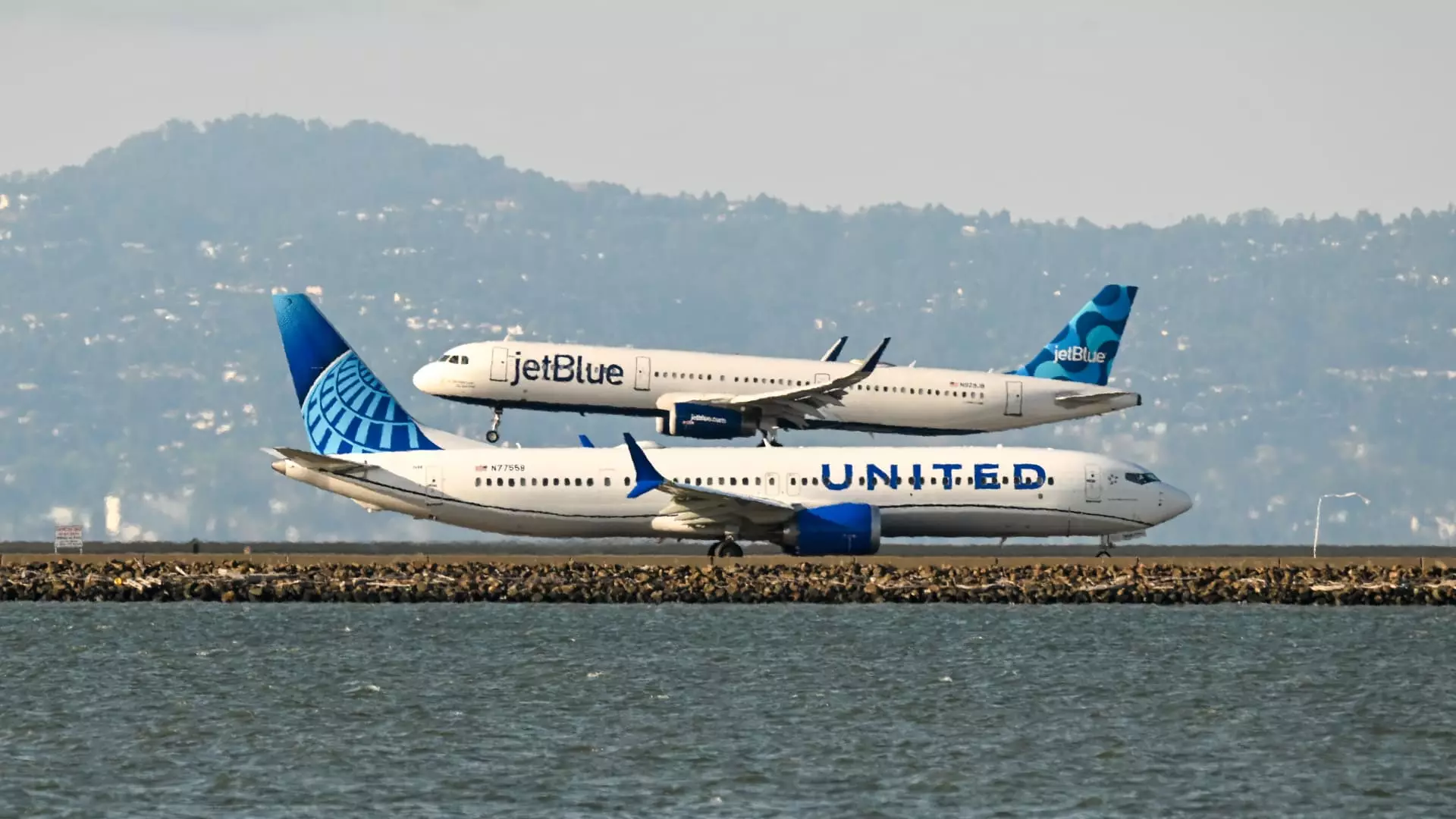In an age where customer service and convenience dictate market success, the recent partnership between United Airlines and JetBlue Airways stands out as a noteworthy development in the aviation industry. Dubbed “Blue Sky,” this collaboration marks a return for United to the high-traffic corridors of New York’s John F. Kennedy International Airport (JFK). With plans that hinge upon mutual cooperation, this vital alliance has the potential to redefine how travelers experience air travel.
Embracing Competitive Dynamics
This strategic partnership poses an ambitious challenge—a response to the relentless competition led by larger carriers. JetBlue’s leadership has long acknowledged its struggle to compete against giants like United and Delta Air Lines, a position that has seriously hampered its growth. By entering into this agreement, United and JetBlue are asserting their readiness to enhance competitiveness while providing customers with an expanded array of options. According to United’s CEO Scott Kirby, the partnership will enable both airlines to better serve common markets while allowing JetBlue passengers access to United’s extensive global routes.
However, while competition is invigorating, it should also raise eyebrows. Is this partnership genuinely in the customer’s best interest, or is it merely a tactical maneuver to hold market share against the backdrop of fluctuating air traffic demands? Skepticism is warranted when corporations engage in alliances; often the motives are more about profit and less about customer welfare.
Reciprocal Loyalty Programs: A Double-Edged Sword
Under the “Blue Sky” initiative, travelers will benefit from reciprocal loyalty programs that promise perks like priority boarding and the opportunity to earn miles on both airlines. Yet, one must question whether this truly translates into more value for consumers. While the intention of offering such benefits sounds enticing, the intricacies of frequent flyer programs often result in complicated redemption processes. As loyalty becomes conditional, many customers may find themselves disillusioned by the real-world implications.
It remains to be seen how effectively these loyalty benefits will integrate into each airline’s existing framework, especially given the intricacies that often entrap loyalty program participants. A merger of systems is not without hiccups, and it raises a fundamental question: will the average traveler reap the promised rewards, or will the promise of benefits be more enticing than the reality?
Regulatory Scrutiny: A Necessary Challenge
While this partnership seems promising, it’s essential to recognize that it must also undergo rigorous regulatory scrutiny. The disapproval of JetBlue’s previous alliances, particularly its failed collaboration with American Airlines, underscores the importance of federal interventions aimed at maintaining a competitive market. Airline partnerships often wade into murky waters where consumer rights can be eclipsed by corporate interests.
The Federal Aviation Administration’s role here is crucial—not only to ensure that this collaboration serves public interest but that it doesn’t inadvertently facilitate an environment of de-facto monopolistic control. An alliance that undermines competition could create fewer choices for consumers and potentially raise prices. It is imperative that regulators scrutinize the possible ramifications this partnership may have on airfare rates and overall consumer experience.
Challenges Ahead: Operational Limitations
Despite the optimistic facade, the partnership is not without its hurdles. United’s return to JFK has been fraught with operational uncertainties, particularly following its exit in recent years due to limited slots at this prime airport. Even with plans to operate several daily flights, United’s presence will be considerably overshadowed by its larger hub in Newark. In contrast, JetBlue’s ability to expand its operations at Newark raises questions; will this be a seamless integration, or will it distill into operational chaos?
Air travel has been testing ground for numerous airlines, and as United continues to grapple with staffing shortages and congestion at Newark, one has to wonder whether they are fully prepared to handle the logistical challenges that this partnership will inevitably introduce.
Future Prospects: Navigating Uncertainty
While the United and JetBlue partnership represents a bold step for the industry, its long-term impact remains uncharted territory. The question is whether such alliances can sustainably increase customer satisfaction and operational efficiency, or whether they will lead to increased complexity that could ultimately burden travelers. In a sector already beset by difficulties, operational difficulties could be the tipping point for customers seeking greater transparency and reliability in air travel.
As we advance into this new age of collaboration, the aviation world watches closely—not just flight paths and profits, but the essence of camaraderie in consumer choices within a highly competitive market.

